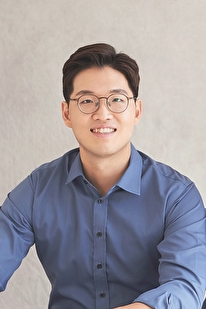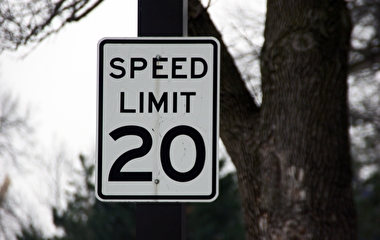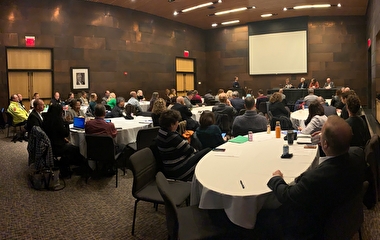
Seongjin Choi joined the U of M this semester as an assistant professor in the Department of Civil, Environmental, and Geo- Engineering. He has also been named a CTS Faculty Scholar.
Choi’s research interests are broad and interdisciplinary, encompassing urban mobility data analytics, spatiotemporal data modeling, deep learning and artificial intelligence, connected and automated vehicles, and cooperative intelligent transportation systems.
“I am particularly driven by the desire to optimize urban mobility and contribute to the development of a sustainable and efficient urban transportation system,” Choi says. “My work involves utilizing data analytics to draw valuable insights from urban mobility data and applying cutting-edge AI technologies in the field of transportation.”
Choi received doctoral, master’s, and bachelor’s degrees from the Department of Civil and Environmental Engineering at the Korea Advanced Institute of Science and Technology. Most recently he was a postdoctoral researcher in the Department of Civil Engineering at McGill University in Quebec.
Read more about his plans and interests below.
What set you on the path of a career in transportation?
My journey goes back to my childhood. As a kid, I was always fascinated with new technologies surrounding cars. I distinctly remember the times when my father was driving, and I would eagerly engage in discussions about the latest features in our car, like cruise control and the online navigation system.
These childhood experiences not only sparked my curiosity but also laid the groundwork for my deep interest in how technology could enhance the driving experience and improve transportation systems. This early exposure to the wonders of automotive technology led me to appreciate the complex interplay between vehicles, technology, and urban infrastructure.
As I grew older, this fascination evolved into a more profound interest in the broader dynamics of transportation systems. The more I learned, the more I was drawn to the idea of integrating advanced technologies like AI and data analytics into transportation. This blend of childhood curiosity and my growing understanding of the critical role of technology in shaping modern transportation systems ultimately set me on the path to a career in transportation engineering.
Tell us about your plans for research and teaching.
At the U of M, my research is centered around harnessing data-driven methodologies and artificial intelligence to transform urban transportation systems. In the coming years, I'm particularly interested in delving into two main areas: spatiotemporal data modeling and the development of scalable multi-agent systems.

The first area involves developing models that are both interpretable and explainable, aimed at deciphering complex patterns in diverse sets of spatiotemporal data. This includes traffic, energy, smart city infrastructures, and data relevant to weather and climate change. The goal here is to gain a deeper understanding of how these varied data types interact and influence urban environments.
The second area focuses on developing scalable multi-agent control systems using AI. These systems will be designed for network-wide management of connected automated vehicles. The challenge here is to ensure these systems can handle large-scale operations efficiently, thereby improving the overall functionality and safety of urban transportation networks.
By advancing these two areas, I hope to contribute significantly to the development of smarter, more sustainable urban transportation solutions.
In my teaching role, I am committed to providing a practical and interdisciplinary approach, particularly tailored for students majoring in civil engineering. My goal is to equip them with the essential skills to effectively apply AI and data analytics across a broad spectrum of challenges in civil, environmental, and geo- engineering.
To achieve this, I plan to focus on areas such as big data analytics, Bayesian statistics, and the applications of both cloud and edge computing in our field. These topics are crucial for understanding and leveraging the vast amounts of data generated in modern engineering contexts. By integrating these elements into the curriculum, I aim to prepare students not only to handle current technological demands but also to be adaptable for future advancements in our rapidly evolving field.
What are the implications of your research for Minnesota?
The research I am conducting has significant implications for Minnesota, particularly in transforming its urban transportation systems. Given the state’s commitment to innovation and sustainability, my research aligns well with these priorities.
First, my focus on spatiotemporal forecasting and advanced data management techniques will greatly enhance traffic management in Minnesota’s urban areas. Utilizing cloud and edge computing along with sophisticated roadside infrastructure, my work aims to streamline the handling of extensive traffic data. This approach is expected to lead to a noticeable reduction in traffic congestion, faster responses to traffic incidents, and a generally more fluid urban mobility experience.
The development of scalable multi-agent control systems for connected automated vehicles, a key focus of my research, will position Minnesota at the forefront of autonomous vehicle integration. This not only enhances road safety but also prepares the state for future transportation trends.
My research in urban vehicle trajectory analytics and the use of deep generative models for mobility data will provide invaluable insights into travel patterns and behaviors. This can inform urban planners and policymakers in Minnesota, helping them make data-driven decisions for infrastructure development and public transportation improvements.
In essence, my research not only addresses current challenges in urban transportation but also equips Minnesota to stay ahead of the curve in the rapidly evolving field of transportation technology.


